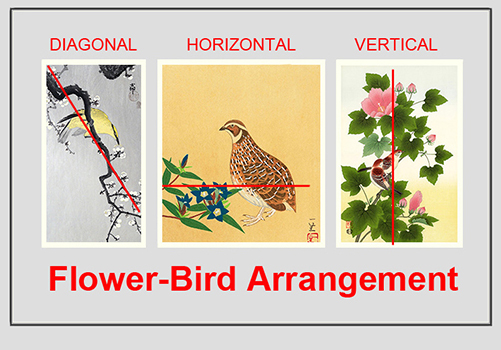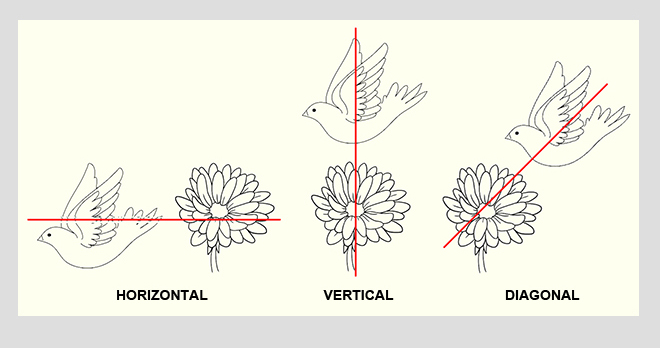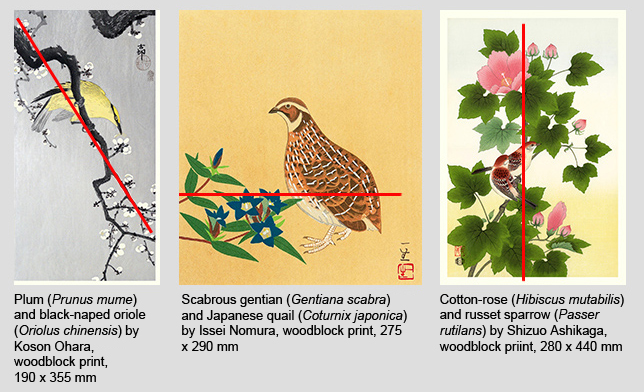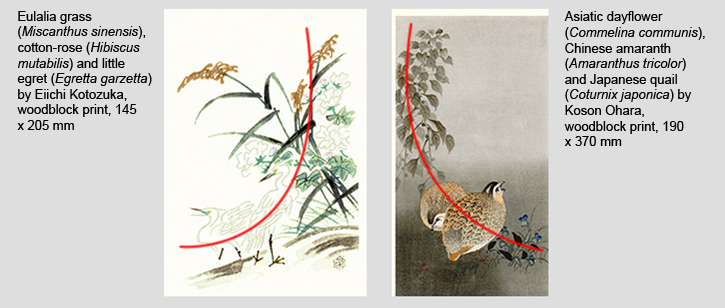Reader Collection > Blog > Flower-Bird Arrangement |
||
 |
||
| An artist can arrange the flowers and birds included in a picture in one of three ways: horizontally or vertically or diagonally. Hypothetical examples of these three arrangements are shown below with a red line added to show the direction of the flower-bird arrangement. | ||
 |
||
| In printed Japanese art, flowers and birds are arranged diagonally far more often (57%) than either vertically (25%) or horizontally (19%). Arranging objects diagonally is a technique used by many Japanese artists to help bring their flower and bird subjects to life. A diagonal line creates the impression of movement and activity, as opposed to rest (horizontal line) or stability (vertical line). Examples of diagonal, horizontal and vertical arrangements are shown below, chosen from the Reader Collection of Japanese Flower-and-Bird Art. The red lines were not part of the original pictures but were simply added here to highlight the direction of the flower-bird arrangement. | ||
|
||
| A curved line suggests movement more than a straight line. Some Japanese artists used a curved diagonal instead of a straight diagonal to suggest movement or activity in their flower-bird art. Two examples are shown below. | ||
|
||

